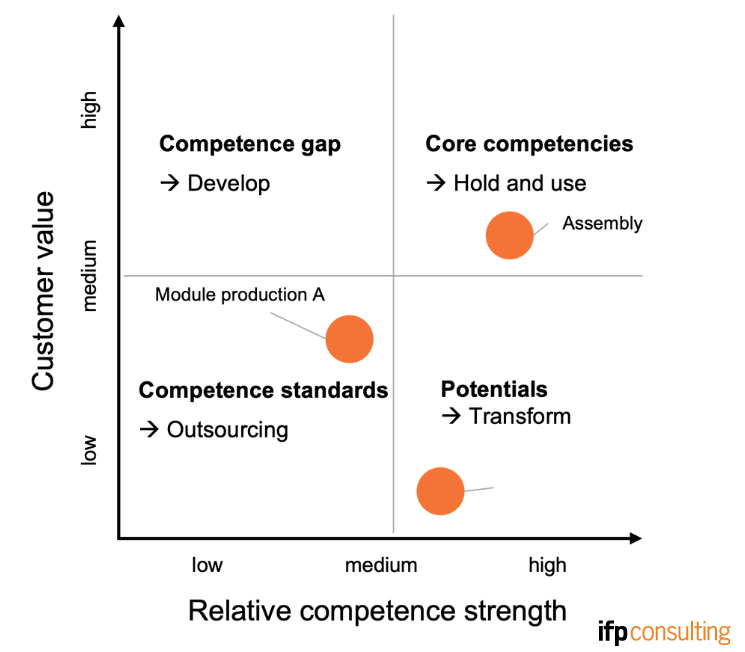Ideal vertical range of manufacture
Determine the right proportion of in-house production in the production process.
Services in the area of operational excellence
Services in the area of operational excellence
Minimal costs vs. robust supply chains
Every company has to face the discussion about an ideal vertical range of manufacture. Restriction to core competencies and extended outsourcing to reduce vertical integration were guiding principles in the past, which were intended to lead to increased competitiveness and greater flexibility in global markets.
In the 1990s, there was a strong trend toward outsourcing and an ideal of a lean company through operational reorganization. Even then, it became apparent that the cost savings realized did not always outweigh the dependencies purchased and the increased control effort.
However, Corona has shown that long supply chains and dependence on suppliers pose a high risk. Those who have the production of the important subassemblies in their own hands are able to deliver in crisis situations and do not suffer from externally caused production interruptions.

What is the optimal vertical range of manufacture?
There is no generally valid answer to the question of the right vertical range of manufacture for every company. How many and the choice of production stages to locate in one’s own company, and for which stages to rely on external service providers, remains to be weighed individually. Reasons for changing the vertical range of manufacture (out- or insourcing) include cost savings, increased flexibility, e.g. in overload situations, or strategic motives (e.g. building up expertise internally or purchasing from specialists).
Therefore, the first step is to analyze the framework conditions. In the second step, the strategy is developed individually at the management level. The fact that the proportion of in-house production in the production process is a relevant cost factor for companies also shows the relevance of a well-founded analysis of the “ideal vertical range of manufacture” for the company.
Transparency with structured portfolio overviews
The vertical range of manufacture, also known as the depth of production, refers to the vertical extent of production. This means the extent to which intermediate goods such as semi-finished products/assemblies or intermediate products are purchased from the market or manufactured in-house. The higher the vertical range of manufacture, the more independent the company is from external suppliers. Basically, the question of the ideal vertical range of manufacture is about determining the perfect balance between specialized suppliers and the streamlining options of integrated manufacturing under one roof.
How can the term “make-or-buy” be distinguished from the decision of vertical integration?
Make-or-buy (MoB) is a decision between in-house production and external procurement. The difference between MoB and vertical integration is that MoB decisions are not limited to the production area. Here, for example, it can also be analyzed whether logistics services or other services are outsourced.
We support you with the right vertical range of manufacture
- Sound analysis for the ideal vertical range of manufacture
- Focus on your core competencies
- Strategic Make or Buy Analysis
- Analysis of in-house and external production
- Outsourcing decisions
- Decision on outsourcing products
- Insourcing decisions
- Decision on in-house production products
What we offer
ifp consulting can support you with a well-founded analysis for an ideal vertical range of manufacture. For this purpose, your core competencies are analyzed in order to continue to locate and expand them within your company. For this purpose, on the one hand, their resource strengths are taken into account, in which the financial strength and know-how strength are considered in more detail. On the other hand, the technological attractiveness of your manufacturing technologies is taken into account in order to show which potentials your technologies have for the future.
We bring the know-how from the industry and the equipment, so that the make or buy strategy is optimally tailored to the company.
Factors of success
However, the content points must be accompanied by other factors. This includes a team with the right competencies and skills and the use of the right methods and tools. Here, classic spreadsheet programs can no longer properly depict the often extremely complex relationships. Our special software is therefore used.

What are the biggest mistakes in determining vertical integration?
- Ill-considered determination of the vertical range of manufacture or make or buy
- Underestimated follow-up costs



